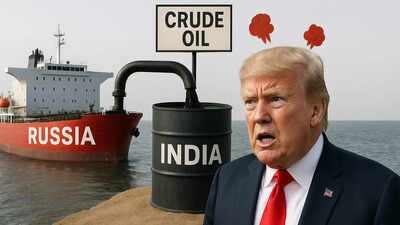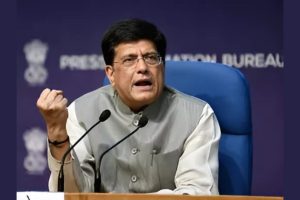Washington D.C. – President Donald Trump has announced a comprehensive Trump India Tariff policy that will impose 25% duties on goods imported from India, effective August 1. The announcement, made via Trump’s Truth Social platform, represents a significant escalation in US-India trade tensions and includes additional penalties for India’s continued purchases of Russian energy and military equipment.
The Trump India Tariff declaration comes as the August 1 deadline approaches for reaching a comprehensive trade agreement between the two nations. Trump described India as a friend but criticized the country’s high tariff rates, calling them “among the highest in the world” and necessitating immediate corrective action.
Russia Trade Penalties Compound Tariff Impact

Beyond the standard Trump India Tariff rates, the President announced an unspecified penalty targeting India’s purchases of Russian military equipment and energy supplies. This additional measure reflects growing US frustration with India’s continued economic relationships with Russia amid the ongoing Ukraine conflict.
Trump specifically criticized India’s Russian trade activities “when everyone wants Russia to STOP THE KILLING IN UKRAINE,” indicating that the Trump India Tariff policy extends beyond purely economic considerations to encompass broader geopolitical concerns about India’s neutral stance on the Ukraine war.
Historical Context of Trade Tensions
The current Trump India Tariff announcement builds upon previous trade disputes between the nations. In April, Trump had initially announced tariffs of up to 27% on Indian goods, which were subsequently paused to allow for ongoing negotiations. The Friday deadline represents the latest attempt to pressure India into comprehensive trade concessions.
Trump has repeatedly criticized India’s trade practices, branding the country a “tariff king” and a “big abuser” of trade relationships. The Trump India Tariff policy reflects his administration’s determination to address what they perceive as unfair trading practices that contribute to America’s substantial trade deficit with India.
Massive Trade Deficit Drives Policy Decision
The Trump India Tariff measures aim to address the significant $45.8 billion trade deficit the US recorded with India last year. This substantial imbalance has been a persistent source of frustration for American trade negotiators, who argue that India’s protectionist policies create unfair advantages for Indian exporters.
Also Read: First Tsunami Waves Hit Russia: DEVASTATING Visuals Shocks The World
Until recently, the US served as India’s largest trading partner, with bilateral trade reaching $190 billion in 2024. Trump and Modi have previously established ambitious targets to more than double this figure to $500 billion, though the Trump India Tariff announcement suggests these goals may be reconsidered without substantial Indian concessions.
Ongoing Trade Negotiations Face Critical Juncture


Both nations have been actively negotiating a comprehensive trade agreement since April, with the Trump India Tariff deadline serving as a significant pressure point. US Trade Representative Jamieson Greer acknowledged that while discussions with Indian counterparts have been “very constructive,” substantial challenges remain.
Greer noted that although he had previously suggested a deal with India might be “imminent,” Delhi’s trade policy has been “protectionist for a very long time” and premised on “strongly protecting their domestic market.” The Trump India Tariff announcement reflects growing American impatience with India’s reluctance to open key sectors.
Agriculture Sector Remains Major Sticking Point
The Trump India Tariff disputes center significantly on agricultural market access, with Washington pushing for greater penetration of India’s farm sector. American negotiators view India’s agricultural market as a major untapped opportunity, but India has fiercely resisted opening this sensitive sector.
Indian Commerce Minister Piyush Goyal recently emphasized that the agriculture sector remains “sensitive for India” and that the government will ensure farmers’ interests are “well protected.” This agricultural protection directly conflicts with American demands and contributes to the Trump India Tariff escalation.
India’s Defense of Protectionist Policies
India defends its agricultural protections by citing food security concerns and the livelihoods of millions of small farmers. These protectionist policies, while economically rational from India’s perspective, directly conflict with American market access demands that underpin the Trump India Tariff threats.


Despite the Trump India Tariff pressure, Indian officials remain optimistic about reaching an agreement. Goyal told international agencies that India was making “fantastic progress” in talks with the US and hoped to “conclude a very consequential partnership.”
Limited Previous Concessions Prove Insufficient
India has already made certain trade concessions, including reduced tariffs on Bourbon whiskey and motorcycles, but these measures have proven insufficient to prevent the Trump India Tariff announcement. The continued $45 billion trade deficit demonstrates that previous Indian concessions have not addressed fundamental American concerns about market access.
Critical August Deadline Approaches
The Trump India Tariff measures will take effect on August 1 unless both nations reach a comprehensive trade agreement. This deadline creates intense pressure on negotiators from both countries to resolve longstanding disputes over market access, agricultural protection, and trade balance issues.
The Trump India Tariff announcement represents a critical juncture in US-India relations, potentially affecting broader strategic partnerships between the two democracies while highlighting the complex intersection of economic policy and geopolitical considerations in contemporary international trade relationships.

